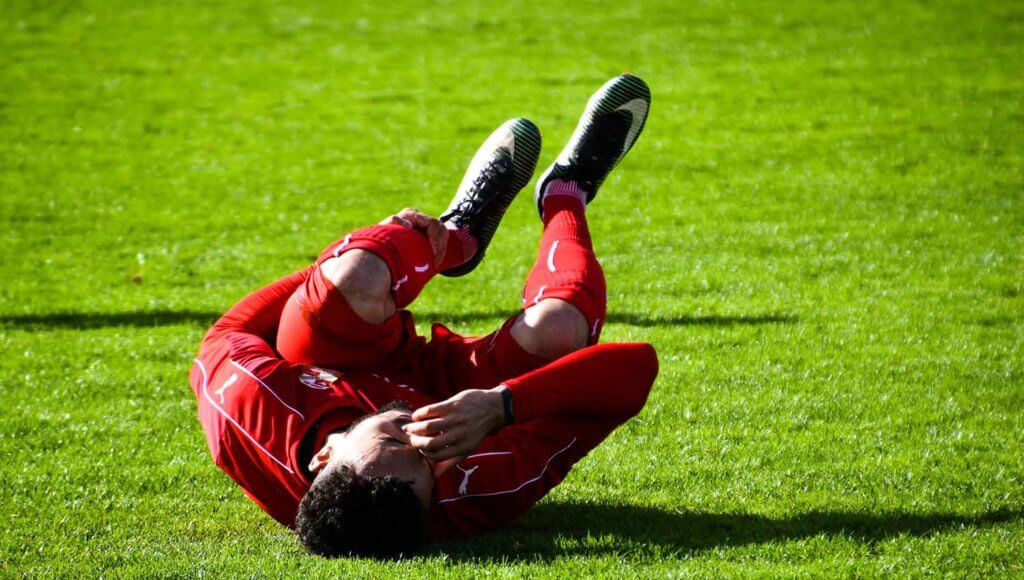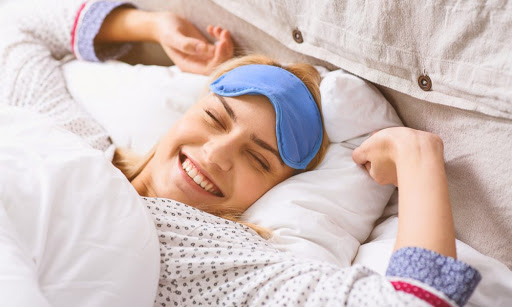
Sleep is critical to good health. Research highlights not only the importance of quality sleep, but also the negative impacts poor sleep can have on our health and our experience with pain.
More than ⅔ (two thirds) of people living with chronic pain also present with sleep complaints, while 50% of individuals with insomnia are living with persistent pain.
Sleep restriction (less than 6 hours per night) for more than four nights in succession can have negative impacts on our daily functioning by impairing our neurocognitive performance (sustained attention, executive functioning, working memory, long-term memory), mood, and lead to burnout.
Poor sleep quality is a risk factor for developing pain conditions such as low back pain and can also lead to burnout. Short sleep (less than 4 hours per night) is also associated with a higher likelihood of having chronic health conditions such as diabetes, cardiovascular disease, and obesity. It can also have negative impacts on our immune function, tissue healing, cardiovascular health, and depression and anxiety.
Improving the duration and quality of your sleep, may be helpful for increasing your tolerance to painful stimuli. A research study found that 3 weeks of consecutive nights of 8 hours sleep is enough to reverse pain sensitivity.
7-9 hours is the recommended duration of sleep for sufficient repair processes for adults. One study found that individuals with knee osteoarthritis who slept 6 hours or more per night demonstrated a better clinical pain response at 6-month follow-up compared to their counterparts who slept less than 6 hours per night.
Recovery and injury
One way to reduce your risk of injury is by optimising various aspects of training and recovery.
Research found that athletes who sleep less than 8 hours per night (on average) have a 1.7 times greater risk of injury than those who sleep more than 8 hours.
Other studies have confirmed the relationship between sleep and injury in elite teenage athletes. The players who slept more than 8 hours during the week reduced their risk of injury by 61%. If an athlete had an increase in training load and training intensity, as well as a decrease in overall sleep, the risk of injury increased 2-fold.

In regard to optimal recovery, one of the most crucial elements is sleep. Sleep is one of the most crucial elements for achieving optimal recovery.
Inadequate sleep is found to impair maximal muscle strength in compound movements (these are multi-joint movements like squats or deadlifts). If sleep is inadequate, strategies to supplement motivation (such as training in groups, ingesting caffeine, or training prior to prolonged periods of wakefulness) may assist the performance of resistance training.
In one study that examined ways to improve recovery in young athletes it was found that prolonging sleep duration, napping, and good sleep hygiene routines were all effective ways to promote optimal recovery. Of all the methods utilised, evidence suggested that prolonging sleep duration had the most beneficial effects on subsequent performance.
If you’re looking to improve your in-season performance, recovery, and also reduce your risk of injury, then getting a good night of sleep is a great place to start!

Strategies to maximise your sleep quality:
- Try to keep a consistent sleep schedule. Creating a habit of waking and going to sleep at the same time whether it’s a weekday or weekend can help your body clock regulate the timing of when your body feels ready for sleep.
- Reduce alcohol and cigarettes before sleep. Whilst alcohol is a sedative and can make you fall asleep sooner, it can negatively affect your sleep quality and quantity. Nicotine has been found to impair both your ability to fall asleep and stay asleep.
- Avoid caffeine and energy drinks 8 hours before bed. Caffeine can take hours to clear out of your system. It is a stimulant and if consumed close to your sleep time it can make it hard to fall asleep and reduce your total sleep time.
- Disconnect from devices in the hour before bed. Devices can keep your brain wired, making it hard to truly wind down. Blue light from televisions, computer screens, phones and tablets might suppress melatonin levels and delay sleepiness.
- Reduce exposure to bright lights 30-60min before bed. Avoiding bright light can help you transition to bedtime and contribute to your body’s production of melatonin, a hormone that promotes sleep.
- Restrict fluid intake and large meals 2-3 hours before bedtime. It can be difficult to fall asleep if your body is still digesting dinner. Try to avoid late dinners. Ingesting large amounts of fluid prior to bed can wake you up in the middle of the night needing to go to the toilet.
- Avoid naps late in the day. Napping for too long or too late in the day, can throw off your sleep schedule and make it harder to get to sleep when you want to. The best time to nap is shortly after lunch in the early afternoon, and the best nap length is around 20 minutes.
- Develop a relaxing routine before bed. It’s easier to fall asleep if you are at-ease. Quiet reading, a hot shower, listening to soothing music, and relaxation exercises can help calm the mind prior to bed.
- Keep the bedroom for sleep. To achieve a strong mental association between your bed and sleep, try to avoid taking work to bed.
- Exercise daily. Regular exercise, particularly in the morning or afternoon, can impact your sleep quality by raising your body temperature a few degrees. Later in the day, when your internal thermostat drops back to its normal range, this can trigger feelings of drowsiness and help you drop off to sleep. Also, if you exercise outdoors, you’ll be exposed to natural light, an important element in helping your body establish a good sleep-wake cycle.
- Try not to stew in bed. If you can’t sleep and are becoming frustrated, try to get out of bed and do something relaxing in low light. It is better to avoid a connection in your mind between your bed and frustration from sleeplessness.

References:
Andersen, M. L., Araujo, P., Frange, C., & Tufik, S. (2018). Sleep disturbance and pain: a tale of two common problems. Chest, 154(5), 1249-1259.
Finan, P. H., Goodin, B. R., & Smith, M. T. (2013). The association of sleep and pain: an update and a path forward. J Pain, 14(12), 1539-52.
Itani, O., Jike, M., Watanabe, N., & Kaneita, Y. (2017). Short sleep duration and health outcomes: a systematic review, meta-analysis, and meta-regression. Sleep medicine, 32, 246-256.
Lowe, C. J., Safati, A., & Hall, P. A. (2017). The neurocognitive consequences of sleep restriction: a meta-analytic review. Neuroscience & Biobehavioral Reviews, 80, 586-604.
Sleep Foundation. (2020). Healthy sleep tips. Retrieved from https://www.sleepfoundation.org/articles/healthy-sleep-tips
Sleep Foundation. (2020). How exercise impacts sleep quality. Retrieved from https://www.sleepfoundation.org/articles/how-exercise-impacts-sleep-quality
von Rosen, P., Frohm, A., Kottorp, A., Fridén, C., & Heijne, A. (2017). Multiple factors explain injury risk in adolescent elite athletes: Applying a biopsychosocial perspective. Scand J Med Sci Sports, 12, 2059-2069.

